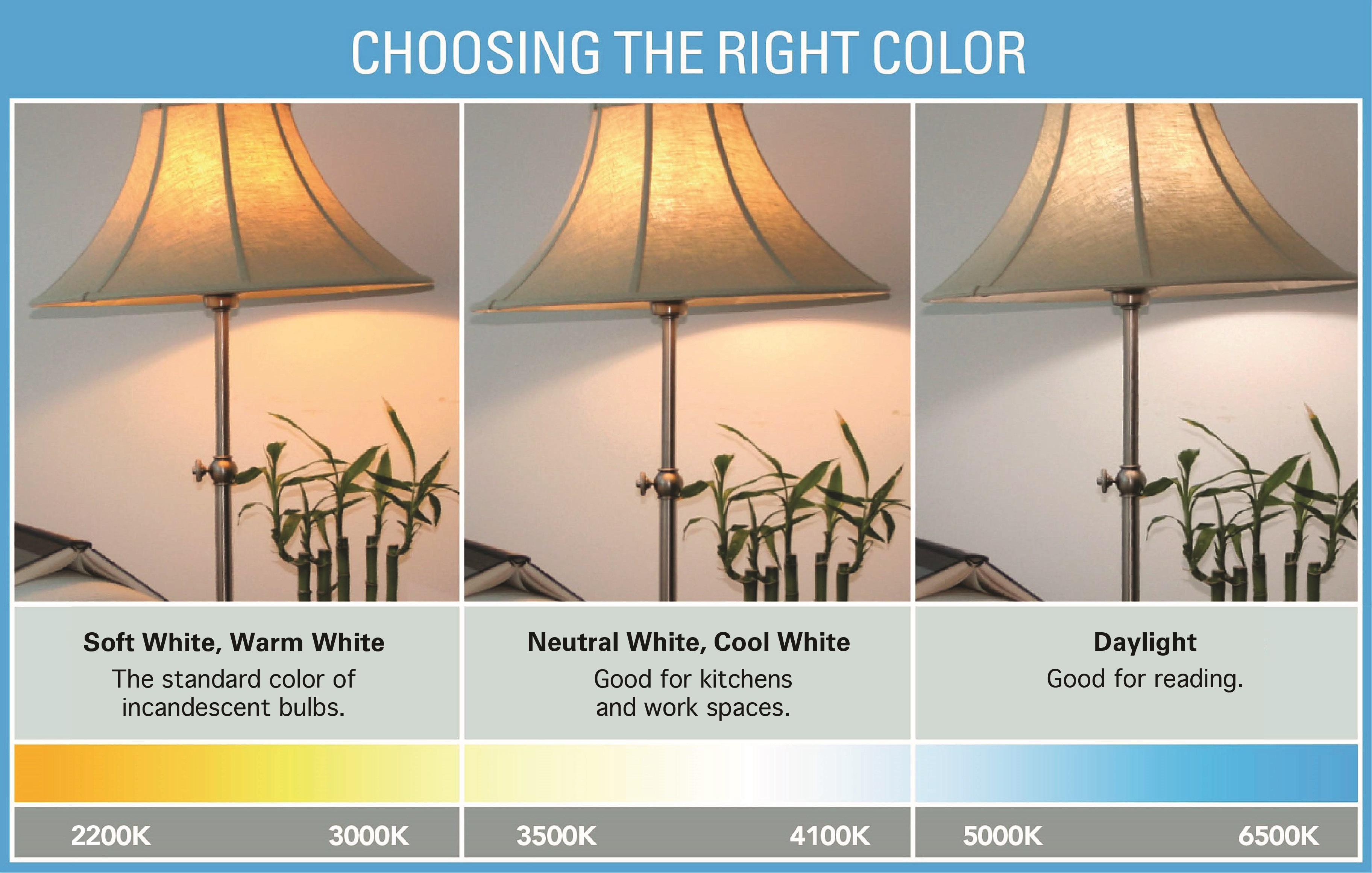Color Temperature and Ambiance: What Color Light Bulb Is Best For Bathroom

What color light bulb is best for bathroom – Color temperature, measured in Kelvins (K), describes the warmth or coolness of light. It significantly impacts the ambiance of a bathroom, affecting the perception of space, mood, and task performance.
When choosing the right light bulb for your bathroom, the color temperature is crucial. For a warm and inviting ambiance, opt for a light bulb with a lower color temperature (around 2700K-3000K). This cozy glow complements bathroom vanity pendant lights beautifully, enhancing their aesthetic appeal.
Remember, the color temperature of the light bulb should harmoniously blend with the overall design of your bathroom, creating a sanctuary of warmth and comfort.
The following table provides examples of color temperatures and their corresponding ambiance:
| Color Temperature (K) | Ambiance |
|---|---|
| 2700-3000 | Warm, inviting, relaxing |
| 3500-4100 | Neutral, natural, balanced |
| 4500-6500 | Cool, energizing, clinical |
Warm Color Temperatures (2700-3000K)
- Create a cozy, intimate atmosphere.
- Suitable for relaxation and unwinding.
- May distort colors, making them appear warmer.
Neutral Color Temperatures (3500-4100K), What color light bulb is best for bathroom
- Provide a balanced, natural ambiance.
- Ideal for general bathroom tasks like grooming and makeup application.
- Less likely to distort colors.
Cool Color Temperatures (4500-6500K)
- Create a stimulating, energizing atmosphere.
- Suitable for task lighting, such as shaving or applying makeup.
- May be too harsh for relaxation.
Types of Light Bulbs and Their Characteristics

When choosing light bulbs for your bathroom, you have several options to consider. Each type of bulb has its own advantages and disadvantages, so it’s important to understand the differences before you make a decision.
Incandescent Bulbs
Incandescent bulbs are the traditional type of light bulb, and they are still widely used today. They are relatively inexpensive to purchase, and they produce a warm, inviting light. However, incandescent bulbs are not very energy-efficient, and they have a relatively short lifespan.
LED Bulbs
LED bulbs are a more energy-efficient alternative to incandescent bulbs. They use up to 80% less energy than incandescent bulbs, and they can last up to 50,000 hours. LED bulbs also produce a very bright light, and they are available in a variety of color temperatures.
Fluorescent Bulbs
Fluorescent bulbs are another energy-efficient option for bathroom lighting. They use up to 75% less energy than incandescent bulbs, and they can last up to 10,000 hours. However, fluorescent bulbs contain mercury, which can be harmful to the environment if they are not disposed of properly.
| Type | Energy Efficiency | Lifespan | Color Rendering | Dimming Capabilities |
|---|---|---|---|---|
| Incandescent | Low | 1,000-2,000 hours | Good | Yes |
| LED | High | 50,000 hours | Excellent | Yes |
| Fluorescent | High | 10,000 hours | Good | Yes |
Considerations for Bathroom Lighting Design

Creating a well-lit bathroom requires careful consideration of the space’s size, shape, and layout. A balanced lighting scheme should meet both aesthetic and practical needs, enhancing the functionality and ambiance of the room.
Natural Light
Maximize natural light by positioning windows and skylights strategically. Natural light provides a bright and refreshing atmosphere, reducing the need for artificial lighting during the day. Consider frosted glass or blinds to diffuse sunlight and prevent glare.
Artificial Lighting
Artificial lighting should complement natural light, providing adequate illumination for tasks such as grooming and makeup application. Choose fixtures that distribute light evenly throughout the space, avoiding harsh shadows or dark corners. Recessed lighting, vanity lights, and wall sconces can be combined to create a layered lighting effect.
Fixture Placement
Place vanity lights above or on either side of the mirror to provide task lighting for grooming. Recessed lights can be used to illuminate the shower and bathtub areas, while wall sconces can add ambient light to create a relaxing atmosphere.
Color Temperature
The color temperature of light bulbs affects the ambiance of the bathroom. Warm white light (2700-3000K) creates a cozy and inviting atmosphere, while cool white light (4000-5000K) provides a more energizing and focused environment. Choose the color temperature that best suits the desired mood and functionality of the space.
The warm, inviting glow of a soft white light bulb is the perfect choice for bathrooms, as it mimics natural sunlight and creates a relaxing ambiance. However, it’s important to note that bathrooms also require adequate ventilation to prevent moisture buildup.
In this regard, it’s worth considering whether exhaust fans are a necessity in bathrooms. Returning to the topic of lighting, the cool, bluish light of daylight bulbs may be too harsh for a bathroom setting, while the warm, reddish light of incandescent bulbs can distort colors and create an unflattering atmosphere.
